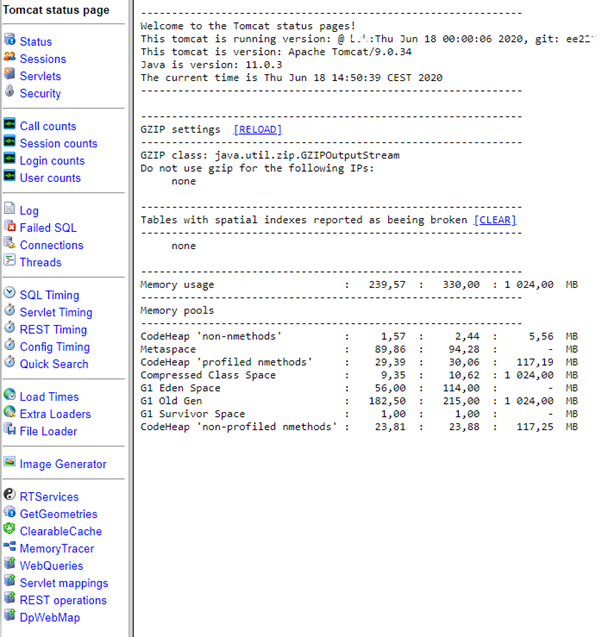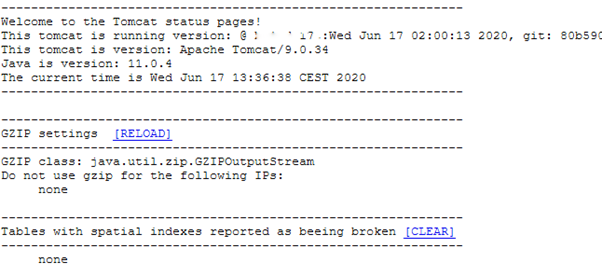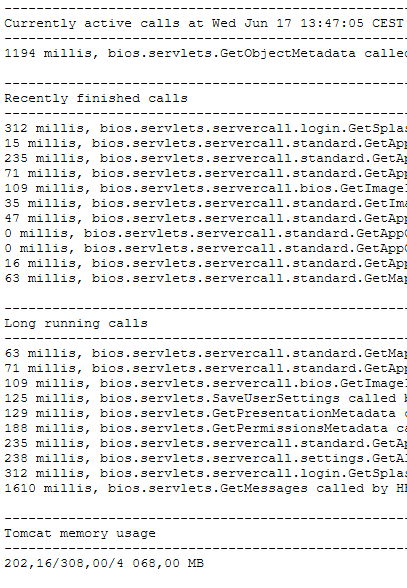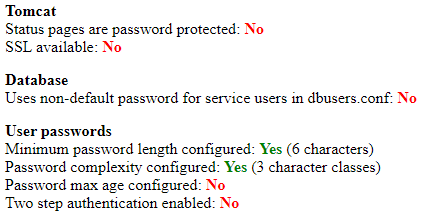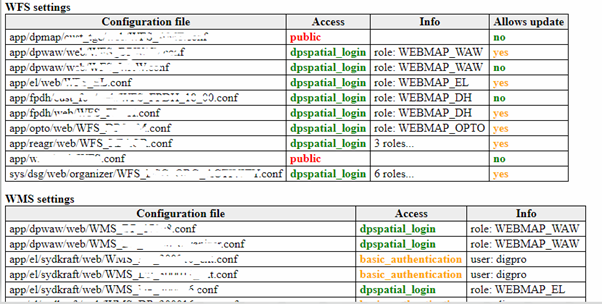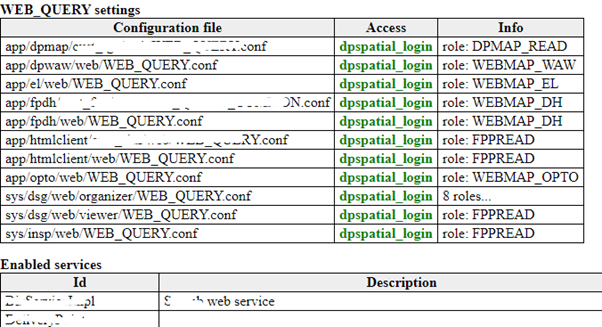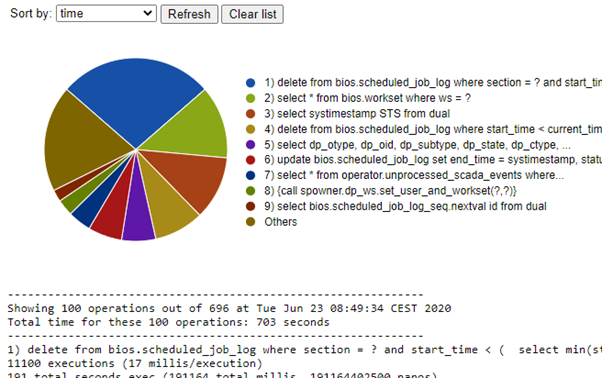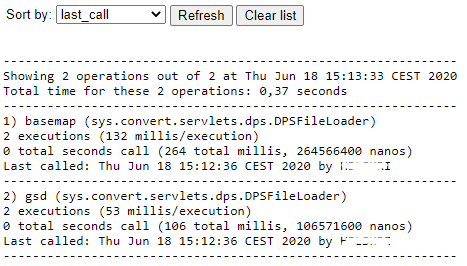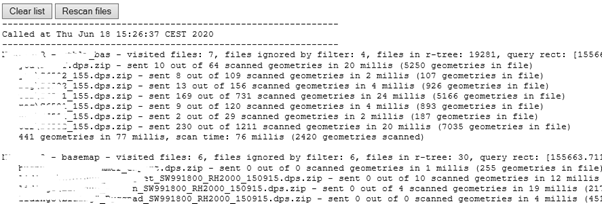The Status page is a web interface for monitoring and troubleshooting in dpSpatial. You access it via:
http://<servername>/status
An administrator can use the site to check system health, sessions and security settings. Accessibility is controlled in the local_settings.conf file in tomcat-site. Here you can specify, among other things, whether the page should require login or be open without authentication.
[status_pages]
# Enable or disable status pages, defaults to enabled=true
#enabled=false
# If status pages are enabled configure the username/password combination
# required here, defaults to no username/password required
#user=dpspatial_administrator
#pwd=my_secret_password
# Allow unauthenticated local host access even if status pages are otherwise
# disabled and/or password protected
#allow_from_local_host=true
Content on the status page
Status
Displays basic system information, for example:
•What version is running and build date.
•Which Java version is being used.
•Any broken spatial indexes. This must be recreated in the database and then cleared via the Clear button.
Sessions
Displays which users are logged in and recent activity. Useful when restarting Tomcat.
Servlets
Displays active and terminated servlets, as well as those that have taken the longest time since the last Tomcat restart. Useful for troubleshooting performance issues or system hangs.
Security
Summary of security settings. Shows, among other things:
•Whether the status page requires login.
•Whether the server supports https.
•Whether service user password is changed (should be Yes in customer environment).
•Whether password policy is configured (specified in password_policy.conf).
•Whether two-step authentication is used.
The password policy is set up in the password_policy.conf file in tomcat-site, see example:
# by default no checks are done
pwd_min_length=6
#pwd_max_length=12
# Check exact against previous password
#pwd_allow_reuse_last=false
# Groups are:
# uppercase: Character.isUpperCase
# lowercase: Character.isLowerCase
# digit: Character.isDigit: 0-9, # Arabic-Indic, Devanagari and Fullwidth digits
# other: not a letter, not a digit. Typically things like "!'#¤%&/".
pwd_needed_groups=3
# disabled, optional, force
# disabled: no user may use 2fa
# optional: each user decides for themselves if they want to use 2fa or not
# force: each user must use 2fa
two_step_authentication=disabled
# For how long we should trust the cookie. This is actually interpreted as (days - 1) * 24 + 12 hours.
# If set, this value must be 1 or greater. The default is 30.
#two_step_authentication.cookie.max_age.days=1
# Change password this often
#max_age_days=180
You can see what type of login is required for a service, what roles are required, users and whether it is possible to use the WFS to update data.
Counts
Displays statistics on system logins.
Log
Displays the last 200 log messages - same as in tomcat/logs. For older logs you need to open the log file directly.
Failed SQL
Lists search queries that failed.
Connections
Displays active database connections.
Threads
Displays what each thread is doing at the moment - useful to identify functions that are hanging.
Timing
Summary of execution times for SQL queries and servlets. Can be sorted on:
•last_call
•executions
•time
•time/execution
The most common is to look at SQL Timing.
Load Times
Displays latest loading times for the map.
Extra loaders
Displays extra graphics loaders, for example for dps files.
File loader
Displays which dps files are loaded and how many geometries are loaded within a given view.
ImageGenerator
Displays image links from WMS uploads - great for troubleshooting performance.
RTService
Displays real-time services and which clients are connected.
GetGeometries
Detailed information on the current loading. Normally only current loadings are displayed.
ClearableCache
Displays what Tomcat has cached. Mainly used by developers.
REST operations
Displays enabled REST services and their documentation. Requires a license for the API module.
Save status as zip
Press Save status as zip to save all current status information as a zip file. This file can then be used for troubleshooting, for example if Tomcat needs to be restarted and you want to keep log and status information for later analysis.
In environments with multiple Tomcat instances, only the status from the Tomcat where you run the command is saved.
The result is best displayed in Firefox. In Chrome and Edge, the content is displayed as raw HTML. Downloaded status page acts as a static snapshot - buttons are disabled. |
